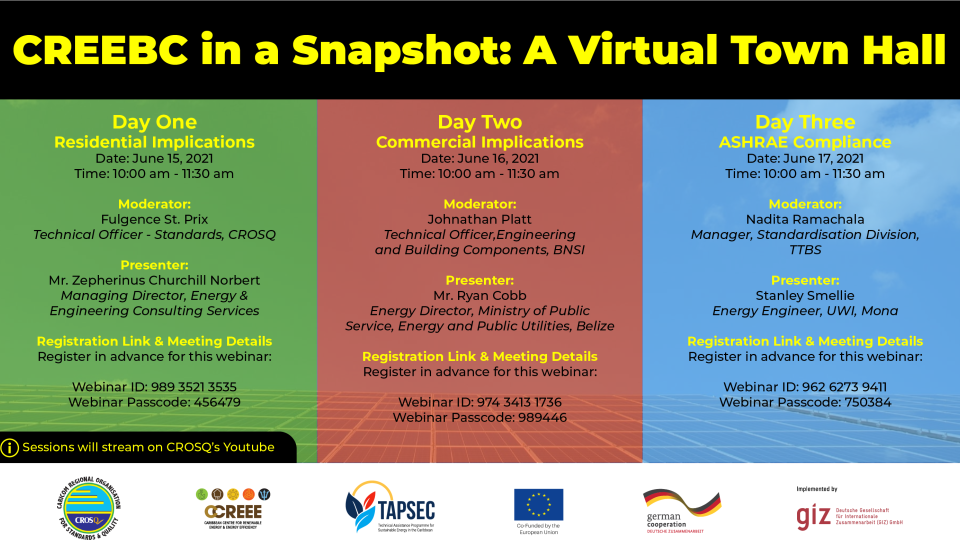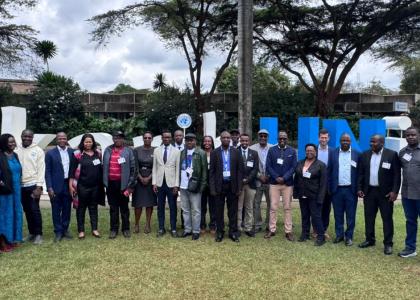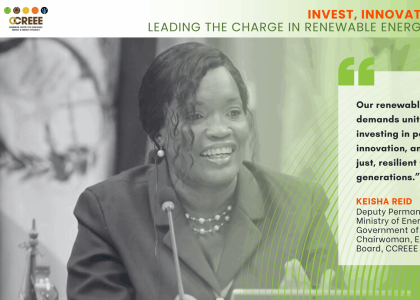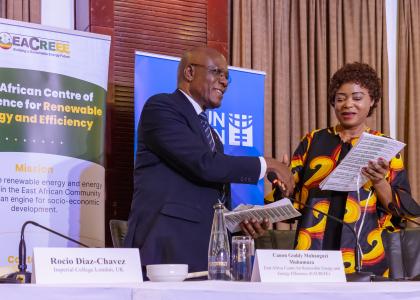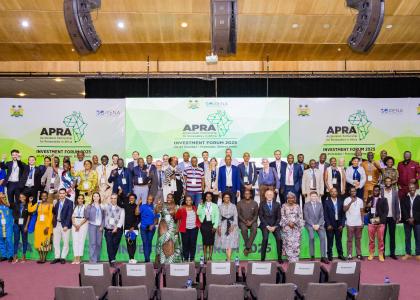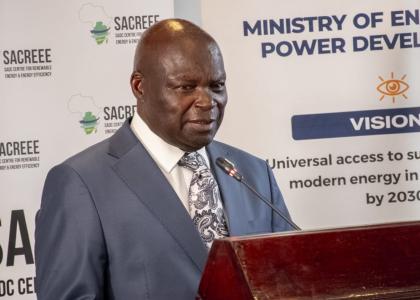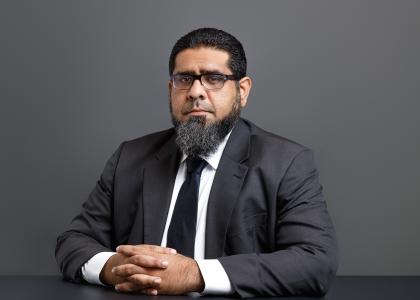By: Dee-Ann Wood
The Caribbean region, comprised of small island developing states (SIDS), is being disproportionately affected by the effects of climate change. These effects include changing weather patterns and, more frequent and severe storm events which can significantly impact the infrastructure and energy systems of the region. To note, in 2019 the International Energy Agency reported that building and construction together account for 36% of final energy use and 39% of energy and process-related CO² emissions. These issues lead the push for energy efficiency in structures and systems while reducing the emissions which contribute to climate change.
The CARICOM Regional Energy Efficiency Building Code (CREEBC) was created to guide the building and construction sector toward increasing efficiencies in residential and commercial buildings, while allowing for innovations. The CREEBC was prepared by CARICOM Regional Organization for Standards and Quality (CROSQ) through a combination of the International Code Council’s 2018 Energy Efficiency Code, and the 2016 American Society of Heating, Refrigerating and Air-Conditioning Engineers (ASHRAE) 90.1 Code, while customizing to fit the unique needs of the Caribbean. CARICOM member states are expected to adopt the CREEBC and use it along with existing national policies.
In line with these objectives, the Caribbean Centre for Renewable Energy and Energy Efficiency (CCREEE) continues their partnership with the CROSQ to champion the energy transition within the Caribbean region, through a series of webinars. During the first webinar, ‘Looking to Invest? Let’s Talk Energy and Quality’ an experienced panel presented on the elements of quality infrastructure (QI) and how they help overcome barriers to investment for financial institutions and governments by ensuring technical and financial cooperation with national and regional policies in energy, environment and quality. Sustainable Energy Expert from the CCREEE, Mr. Gerald Lindo discussed how the CCREEE can simplify the complex process associated with investments in energy by acting as impartial brokers, facilitators, and intermediaries for technical services and performance monitoring. The CCREEE thereby acts to minimize risk and build trust in the consumer as they have the assurance their best interests are kept in mind. Ms. Charlin Bodley, Sustainable Energy Project Development and Gender Expert of the CCREEE’s Project Preparation Facility (PPF) highlighted the services the PPF offers to project developers, investors and financers, and its relation to QI including advisory services, technical assistance and training to support the players in the technology market.
The second webinar ‘Quality Infrastructures in Energy - Why the Regional Energy Sector Needs Quality Parameters’ targeted Micro-, Small and Medium Enterprises, retailers and manufacturers of electrical appliances with the aim of sensitizing and educating on the importance of the quality parameters in the region’s energy sector. Another member of the CCREEE team, Ms. Cherri-Ann Farquharson, Knowledge Management and Capacity Development Expert shared the benefits of quality infrastructure in the energy sector.
‘CREEBC in a Snapshot’ a virtual town hall webinar series was then held to popularize and explain key points of the CARICOM Regional Energy Efficiency Building Code (CREEBC) from residential, commercial and ASHRAE compliance perspectives. Mr. Elson Jordan, Finance Manager of the CCREEE, gave the opening remarks to this series noting that as we build and rebuild, we must recognize that our outputs impact the entire ecosystem of the region. While highlighting the 5P’s of the Sustainable Development Goals (SDG) - people, planet, prosperity, peace and partnerships - Mr. Jordan noted that it is not the conversation but the conversion to renewable energy that lagged and expressed the hope that this webinar would aid in accelerating the conversion to renewable energy and energy efficient systems within the region.
Each day, presentations were given by experts in the field followed by highly engaging question and answer sessions with industry policymakers, professionals and other stakeholders in attendance.

